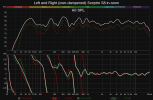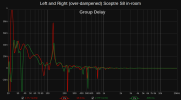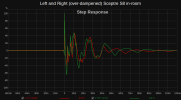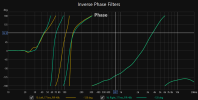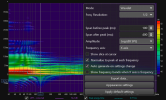Considering auditory envelopment (AE), don't focus on loudspeaker group delay. The main contributor of LF inter-aural distortion is the listening room.
In recreational sound, especially with stereo, such distortion may be considered benign, but it also limits the envelopment-range the room+system is able to convey; and limitations may be from both sides. Even pop recordings now include joyful AE contrasts that cannot be appreciated unless the listening room+system offers some degree of transparency.
In recreational sound, especially with stereo, such distortion may be considered benign, but it also limits the envelopment-range the room+system is able to convey; and limitations may be from both sides. Even pop recordings now include joyful AE contrasts that cannot be appreciated unless the listening room+system offers some degree of transparency.





